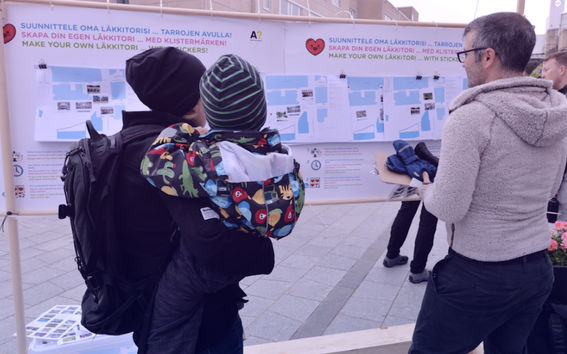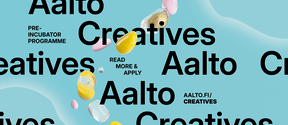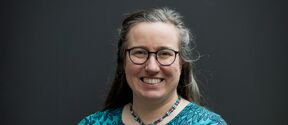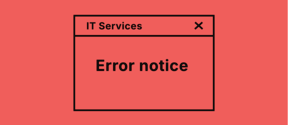Espoo relies on service design

The annual Designing for Services course is part of the strategic partnership. The collaboration began in 2017 and the themes vary by each course.
To date, five service design courses have been implemented in collaboration, with the participation of approximately 125 design students and numerous experts from the City of Espoo. Altogether 25 design proposals have been produced for expert evaluation and, where possible, further work.
‘Cooperation with the public sector has been one of our important strategic themes over the years’, says Tuuli Mattelmäki, Head of the Department of Design.
Through collaboration, students have the opportunity to see and learn about a public organization and how it works. It is also important that the city officials learn to work with designers.
‘When the collaboration started, the use of design in the public sector wasn’t that widely known, but nowadays, public organizations are hiring and engaging designers more and more often’, says Mattelmäki.
Supporting the employment and participation of international residents
In 2020, internationalization was chosen as the theme of the co-operation, as in Espoo diversity and inclusion have been recognized as important not only for creating an equal society, but also for building a more sustainable future.
The foreign-speaking population of Espoo is growing rapidly. The city wants to adopt and develop solutions that meet the needs and requirements of its growing multicultural and non-Finnish-speaking population, and support those who want to move to Espoo.
Head of the Department of Design Tuuli MattelmäkiThe use of design in the public sector hasn’t been widely known, but nowadays public organizations are hiring and engaging more designers."
The unemployment rate of immigrants is high also in Espoo. There are numerous barriers to employment, such as fragmentation of services, difficulties in finding information and, among other things, inexperience with international recruitment processes.
How to address internationalization in the city’s various units and services? How to develop service concepts that support internationalization? How is the potential of foreign applicants identified in recruitment processes? And how could foreign-speaking citizens be involved in urban planning?
The design students, in collaboration with numerous city officials, sought solutions to these questions last autumn.
The theme is also linked to the KOHO joint research project between Espoo and Aalto, which focuses specifically on the employment of the international workforce and its challenges.
Digital service platforms and a citizen journey map
Service design provides an approach that involves different stakeholders in engaging, brainstorming, and testing services — and ultimately finding and using services.
As a result of the collaboration, the students designed for example a modular Built by people service system, which brings together the city's various internationalization services and provides a low threshold for finding and using them. It would help employers, international talents, service providers, and the City of Espoo to find not only each other but also all the tools they need in one place. The system provides guidance, help with networking and support at various stages of the job search process.
To improve the recruitment of international residents, the designers proposed a digital platform to help connect international job seekers and employers. It would be maintained by the public sector, for example the employment services of the city of Espoo.
Work-life contacts for international students could be increased by both combining the existing services and adding certain new services in a CAREER service platform. The students suggest financial incentives for intern recruitment, a website for students to showcase their portfolio, and good examples of student collaboration from companies and public sector actors.
Development Manager Arja Kaikkonen, City of EspooThe students give us fresh ideas that we have not yet been able to formulate."
The participation of foreign-speaking residents in urban planning concerning their immediate surroundings was investigated at Läkkitori district in Espoo’s Leppävaara. The solution was a ‘citizen journey map’ that illustrates the stages of participation in urban planning. It identifies important information to be shared with all residents, issues where residents are expected to participate in the planning, and where they need support for participation.
In addition, for the Lagstad School Museum to increase multiculturalism students proposed a new model of a more inclusive museum experience: the museum visitors and the local community could be active in the ideation and production of the museum's service package. Through this collaboration a culture of diversity in Espoo is built together. The museum has incorporated the proposal into its new strategy and is working on furthering the ideas.
Fresh ideas, practical solutions
The experts of the City of Espoo who have been course partners in previous years have been satisfied with the quality and depth of the course outputs. For example, the Business Espoo network, which brings together Business Services, originated from the idea on a service design course to bring together the services of companies and entrepreneurs in a ‘business service market’.
‘The collaboration has been fruitful and seems to be evolving all the time. The students give us fresh ideas that we have not yet been able to formulate’, says Arja Kaikkonen, Development Manager at the City of Espoo.
‘The Designing for Services course is a valuable platform for us city officials. We can meet international students and have heureka experiences that promote inclusion and diversity in our own work,’ says Melissa Arni-Hardén, Chief Specialist at the City of Espoo.
More information:
Tuuli Mattelmäki, Director of the Department of Design, Aalto University, tuuli.mattelmaki@aalto.fi, tel. +358503724428
Course assistant, doctoral candidate Annukka Svanda, Aalto University School of Arts, Design and Architecture, annukka.svanda@aalto.fi, tel. +358503099436
Chief Specialist Melissa Arni-Hardén, City of Espoo, melissa.arni-harden@espoo.fi, tel. +358 40 508 2234
Development Manager Arja Kaikkonen, City of Espoo, arja.kaikkonen@espoo.fi, tel. +358 43 824 4806
Read more news

Textile Chemistry Group Meeting Held
The Annual Meeting of The Textile Chemistry Group held on Thursday, December 11, uniting researchers, doctoral candidates, master’s students, and interns to present their advances in sustainable textile technologies.
Call for Applications: Aalto Creatives Pre-incubator Programme Spring 2026
Join the Aalto Creatives afterwork and info session on 20.1.2026 to find out more about the open call and meet the Aalto Creatives team. At this event, alums from the pre-incubator tell about their entrepreneurial journeys and share their experiences from participating in the AC programme.
Sanna Suoranta elected Computer Science teacher of the year 2025
The teacher of the year was announced at CS Staff meeting on Tuesday 9 December 2025.






